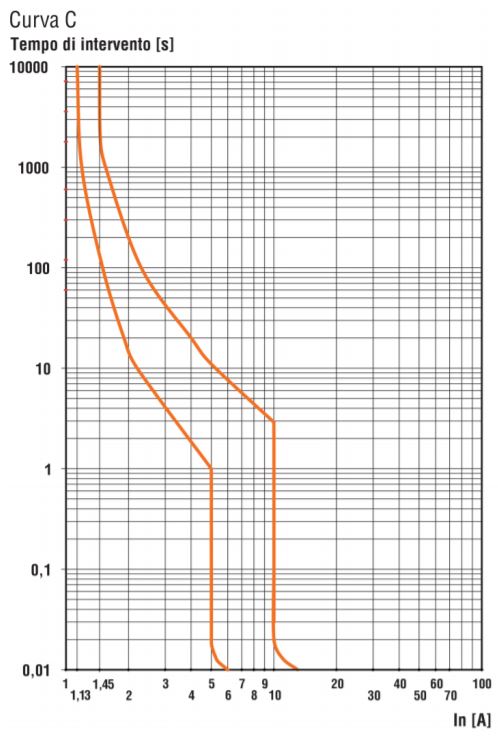An MCB must protects against short circuits or sudden increases in the current absorbed by a load. The magnetic trip curves exactly define the protection behavior based on the amount of current to be interrupted. There are appliances (loads) that could give rise to untimely trips because when they start they have absorption peaks (eg. electric motors). In other cases the load could be very sensitive and not withstand even minimal current increases. To meet the various cases, the MCBs are
offered with different magnetic trip curves:
‐ C curve: trip in the range 5In ÷ 10In
‐ B curve: trip in the range 3In ÷ 5In
‐ D curve: trip in the range 10In ÷ 14In
C curve MCBs are the most used in installations without particular loads, those of B curve are suitable for the
protection of circuits with low inrush currents and for the protection of cables with considerable length. Finally, D
curve is used to protect loads with high insertion currents (motors, transformers, etc.).
Hereunder there is an example of an MCB curve with magnetic C curve:

________________________________________
Other information on this topic
Visit the website page dedicated to Miniature and residual circuit breakers.
